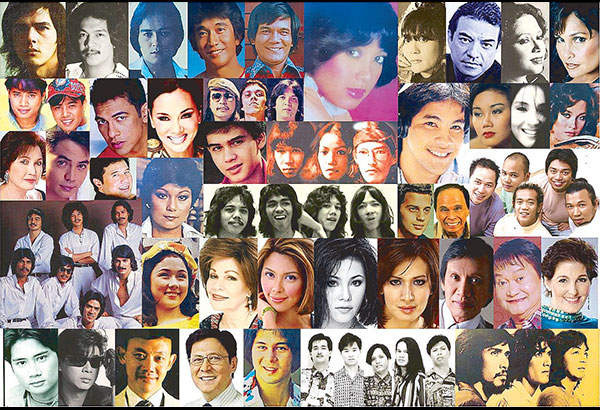The Vicor story

(Part 1)
The year was 1966. There in a cubby-hole of an office in a street called Raon now, Gonzalo Puyat, then known as Manila’s version of Tin Pan Alley, cousins and best friends Orly Ilacad and Vic del Rosario Jr. officially joined the music business. They were hardly out of their teens. Ilacad had just celebrated his 21st birthday and Del Rosario would follow suit some months later. All they had was a name, Vicor, which put together the first syllables of their first names and a borrowed P4,000 investment for their venture.
But it was an exciting time for popular music and like most young people of the ’60s era, they had big dreams. Those were the days when musically-inclined kids had faith in themselves and believed they could earn a living making music. Orly, back then, had his band, The Ramrods. Vic tagged along and helped out with their gigs. Maybe they can record Orly and The Ramrods, plus other bands and become like the Ventures or — why not? — even the Beatles. Maybe people will buy their records.
So day after day, they shared the only desk in their Raon office. If Orly had a visitor, Vic would leave so that Orly could play boss behind the desk and vice-versa. They wiped that desk clean and swept the floor. When available, their friends were drafted to do odd jobs around the office. Often they coaxed disc jockeys into giving them promo copies of new record releases or they combed Raon’s record bars, which at the time merrily reverberated with all types of sounds day and night.
If they found something that they thought would sell, Orly would be off to the recording studio to do a version by the Ramrods or by any of the artists they had put under contract. This was fairly easy to do as licensing of foreign works for recording was not strictly enforced in the Philippines during that time. Once the master is ready, they ordered the record labels, which they then diligently counted one round piece by one round piece. They had to. They could not afford to lose even one of those 45 RPM singles. When the product was finished, Vic turned salesman and sold the records himself. They had minor hits here and there.
In 1968, they finally had a big hit. It was a cover of a fun, novelty ditty by PJ Proby, Niky Hokey which they gave to then young and hot TV-movie star Jeanne Young to record. The pretty 16-year-old Jeanne was already a big star on television, That Young Image. She was also starting to act in films. Flip-sided with Lesley Gore’s You Don’t Own Me, the single made more money for Vicor than the cousins ever imagined. Irresponsible boys that they were though, they promptly lost all of it in a game of blackjack. They never made the same mistake again.
But that was an auspicious beginning. What was first trial and error on the part of Orly and Vic had acquired direction. They started putting big names like Helen Gamboa, Norma Ledesma and matinee idol Tirso Cruz III under contract. They also checked out a lot of newcomers. They will soon find out if that the two of them had both the eyes and especially the ears necessary to spot potential stars. Never mind of those talents seemed unlikely choices.
One was a young aspiring singer-actor named Victor Wood, who was seen as an incongruous presence beside the singing stars of the time. Think Eddie Peregrina, Tirso, Edgar Mortiz. Kahoy as he was fondly called, was very handsome in a Caucasian way. He looked like he belonged to another era. He could sing though and was patient enough to hang around Vicor for days on end waiting for his break. He got it with an original single, I’m Sorry My Love, which only did modestly. He was then given a second chance, a cover of Bobby Vinton’s Mr. Lonely. But that came with a warning. If that record didn’t sell enough copies, then that would be the end of his singing career at Vicor. Mr. Lonely hit it big and Victor became a Jukebox King.
Another unlikely choice was Pilita Corrales. She was Asia’s Queen of Song, the country’s biggest singing star with her own long-running TV show, Your Evening With Pilita and she was also a film actress. Signing up Pilita could lend prestige to the company name. But they wanted Pilita to do something she had never done before. Instead of recording her usual covers of foreign hits or originals in English, Pilita who only spoke Spanish, English and Cebuano was asked to sing classic Tagalog songs. The risk paid off. The result was Philippine Love Songs, one of the biggest selling albums of all time. The LP, the first of a long series, also marked the introduction of George Canseco who composed the hit cut Kapantay Ay Langit.
- Latest
- Trending



























